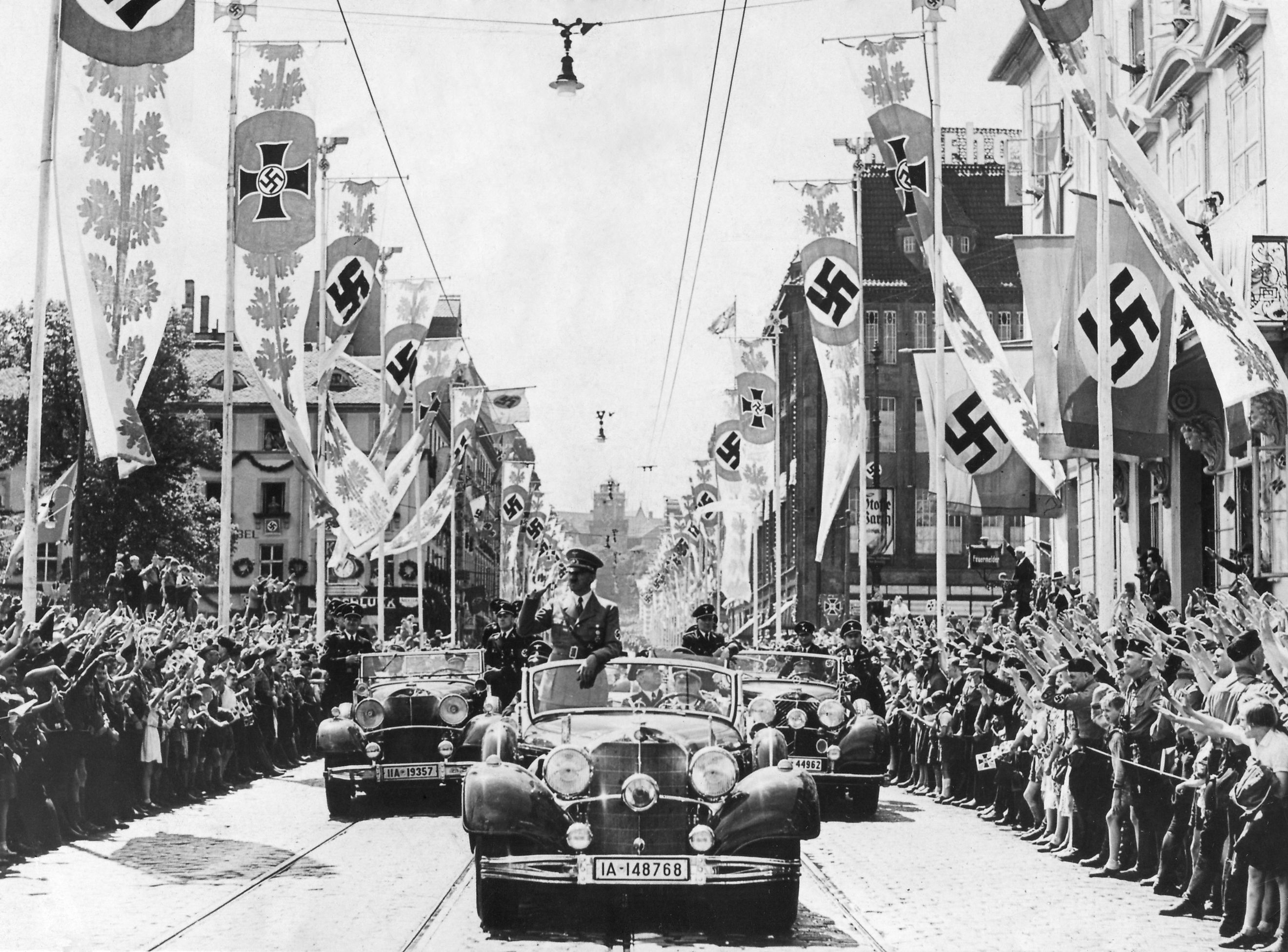
How The Stock Market Crash Of 1929 Led To World War II
The Stock Market Crash of 1929 marked the beginning of the Great Depression. While this event caused unrest worldwide, discontent was particularly strong in Germany. The newly created Weimar Republic could not adequately address the rapidly deteriorating economic situation. This seeming incompetence led to more and more people voting for parties that wanted to destroy German democracy, resulting in Adolf Hitler becoming the Chancellor of Germany on January 30, 1933. The next half a decade saw Hitler remilitarize Germany, culminating in the invasion of Poland on September 1, 1939.
World War I, The Weimar Republic, And Hyperinflation
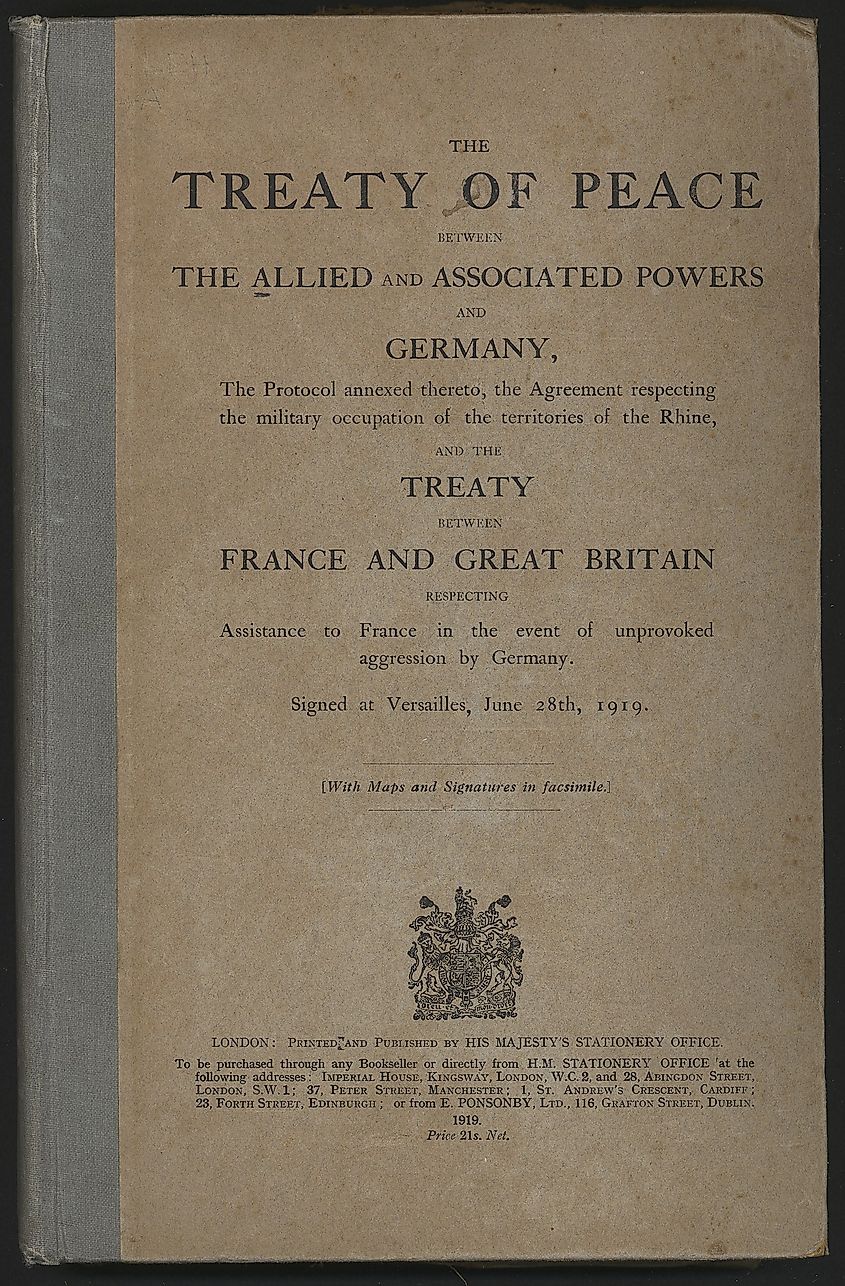
World War One ended on November 11, 1918. The months leading up to and following its conclusion were tumultuous, particularly for Germany. Indeed, in less than a year, the country saw its monarchy fall, several failed communist revolutions, and the establishment of a democracy known as the Weimar Republic. From the beginning, Weimar was unpopular. The Treaty of Versailles dictated that Germany needed to accept sole responsibility for the war and pay billions of dollars in reparations. Despite provoking significant anger, the Allies threatened to invade Germany if it disagreed with these terms. Therefore, President Friedrich Ebert signed the Treaty of Versailles on June 28, 1919--making the newly established democratic system a popular scapegoat for Germans angry with their current political reality.
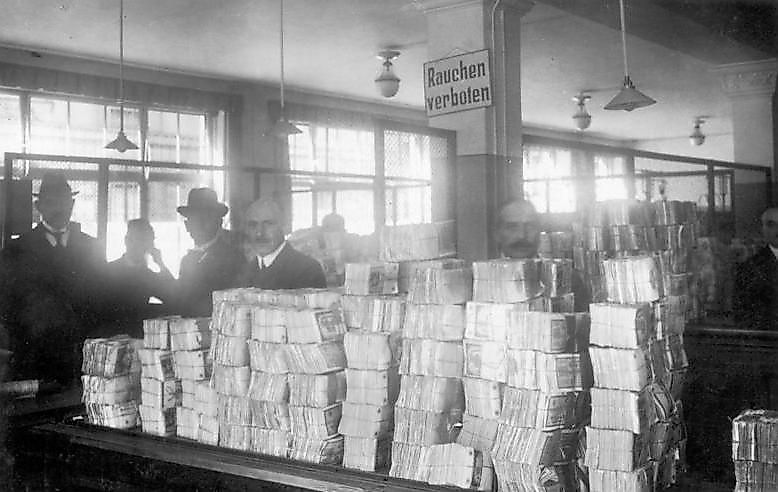
The German government simply printed money to pay the reparations, resulting in hyperinflation. Thus, in July 1919, one American dollar was equivalent to 14 Reichsmarks (RMS). By July 1920, it was worth 39.5 RMS. Finally, by November 1923, an American dollar was worth 4.2 trillion RMS. This economic turmoil prompted widespread civil unrest, the most notable manifestation of which was the 1923 Nazi Beer Hall Putsch in Munich. However, following the introduction of a new currency called the Retenmark, and the Dawes Plan, a more manageable series of reparations payments, the economy began to stabilize in 1924.
The Stock Market Crash Of 1929
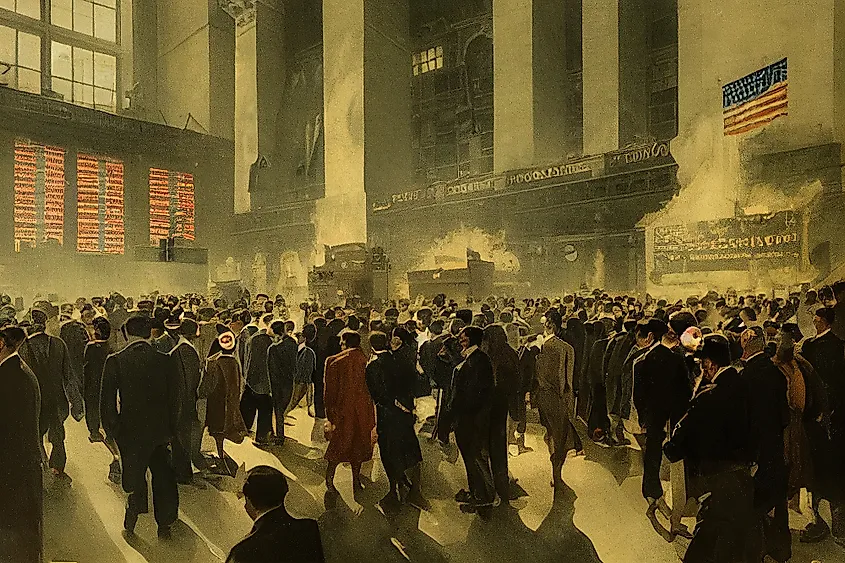
In sharp contrast to Germany, the economy in most of the rest of the world throughout the 1920s was booming. For instance, American gross domestic product (GDP) increased from $6,460 to $8,016 per capita from 1920 to 1929. The American stock market also rose from 63.9 points in August 1921 to 381 points by October 1929. However, this bull run was largely bolstered by speculation and margin trading rather than strong business fundamentals. Therefore, on September 5, 1929, economist Roger Babson warned that a crash was imminent. Then, on September 20, British investor Clarence Hatry was jailed for fraud. All this led to market instability. Finally, on October 24, 1929, the bottom fell out, with the market opening 11% lower than the day before. The Wall Street Crash of 1929 had officially begun, and along with it, the Great Depression.
The German Reaction
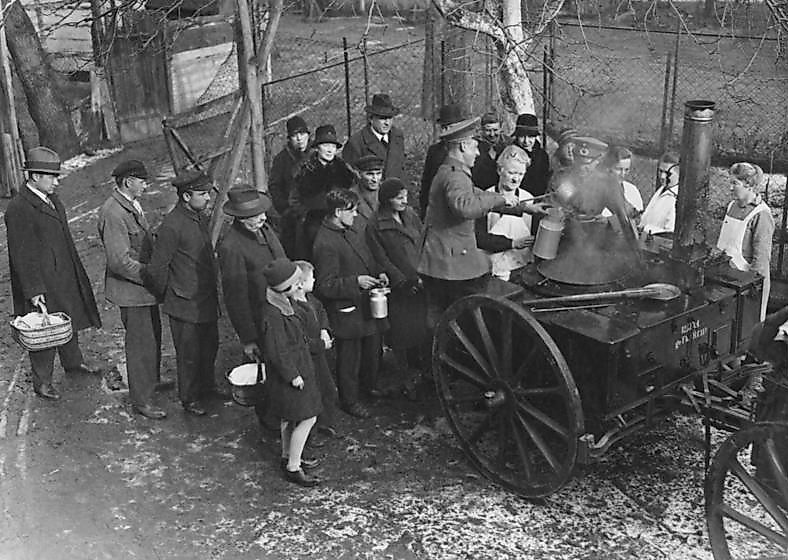
Germany was hit particularly hard by the Great Depression, with 6.12 million people, or 33% percent of the working population, being unemployed by February 1932. This was far worse than any scenario for which the government had planned. Therefore, it could only provide 900,000 people with unemployment or welfare benefits, forcing others to rely on private charities. Despair thus ran rampant in German society, with suicide cases, domestic abuse, homelessness, depression, and drug abuse all rising in the early 1930s.
With memories of the end of World War One and hyperinflation still fresh, general anger toward the Weimar Republic also increased. Said discontent was not helped by the Grand Coalition, a group of parties from across the political spectrum that had ruled Germany for the past two years, collapsing in 1930. Right-leaning centrist chancellor Heinrich Brüning then took office. He mostly ruled by emergency decree, forcing through deeply unpopular budget cuts and austerity measures. These policies provoked further outrage, with more and more Germans wanting to completely upend the entire democratic system.
Hitler Comes To Power
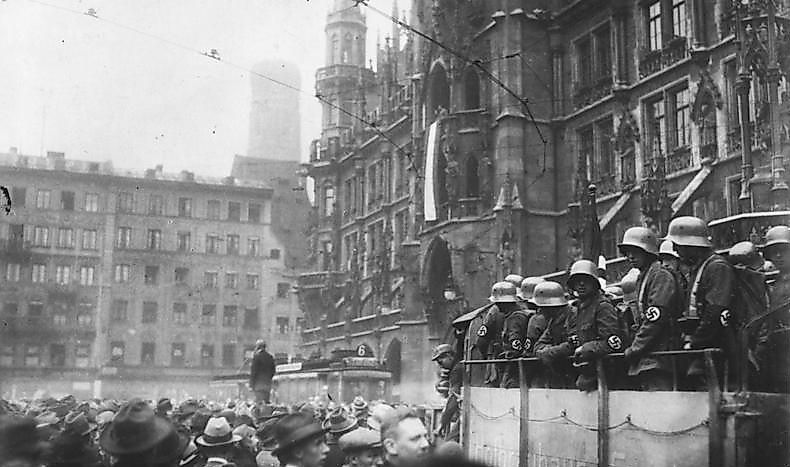
After the Beer Hall Putsch, the Nazis realized that to gain power, they needed to work within the established political system. Therefore, they started to compete in elections. The onset of the Great Depression saw their support dramatically increase, with the Nazis winning 107 seats and 6.3 million votes in the 1930 Reichstag election. This win was a far cry from the 14 seats they won in the 1928 election. Presidential elections took place in the spring of 1932, in which Hitler won 37% of the vote. A new round of Reichstag elections in the summer of that year also saw the Nazi Party win 37%.
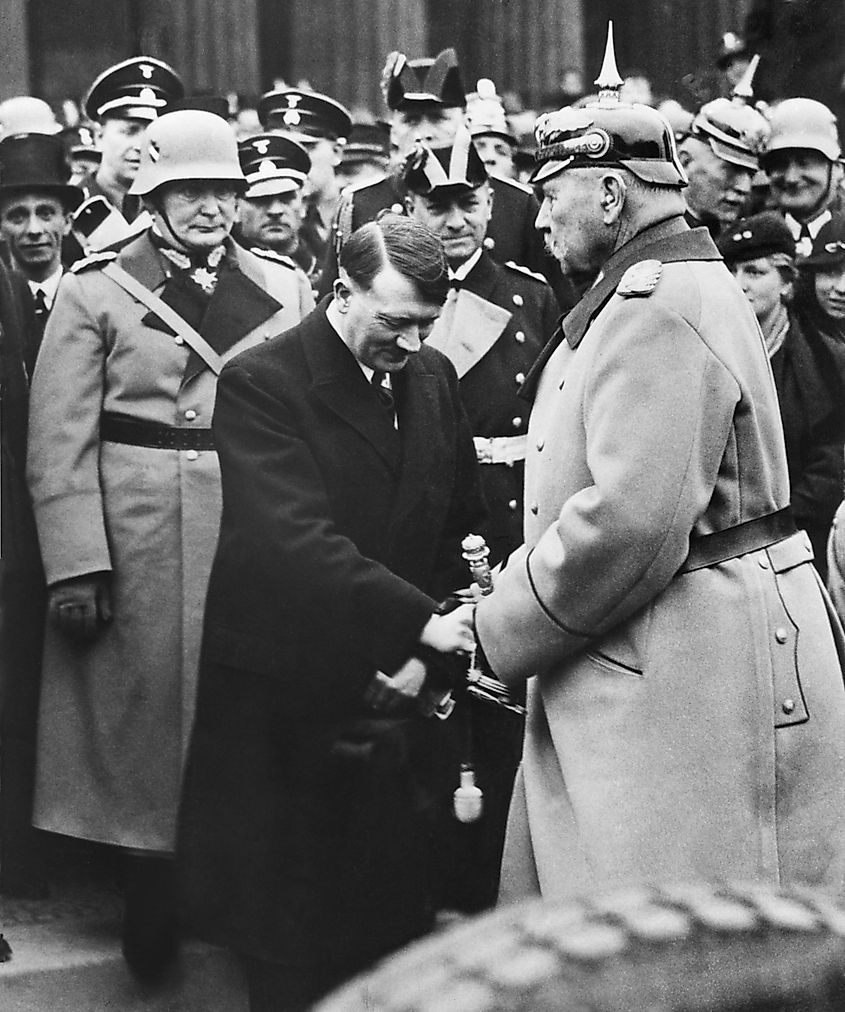
Despite decreased support for the NSDAP in the November 1932 election, Hitler was named Chancellor on January 30, 1933. This occurred because the non-Nazi conservative elites believed that they could control him, with Hitler's Vice-Chancellor Franz von Papen famously proclaiming that " in two months' time, we will have squeezed Hitler into a corner until he squeaks." However, on February 27, 1933, the Reichstag caught fire. The following day, Hitler issued the Reichstag Fire Decree, a law that suspended all civil liberties. On March 23, he then passed the Enabling Act, allowing him to push through laws without the approval of the Reichstag or the President. Finally, on May 2, the Nazis seized the trade unions. In about three months, Hitler had come to control most major institutions in German society.
The Great Depression allowed for anti-democratic sentiments to flourish in Germany. The Nazis took advantage of these feelings, steadily gaining electoral support until Hitler was finally named Chancellor. Therefore, while a straight line cannot be drawn from the Great Depression to World War II, it certainly can be understood as a major contributing factor in the conflict's main aggressor coming to power.











